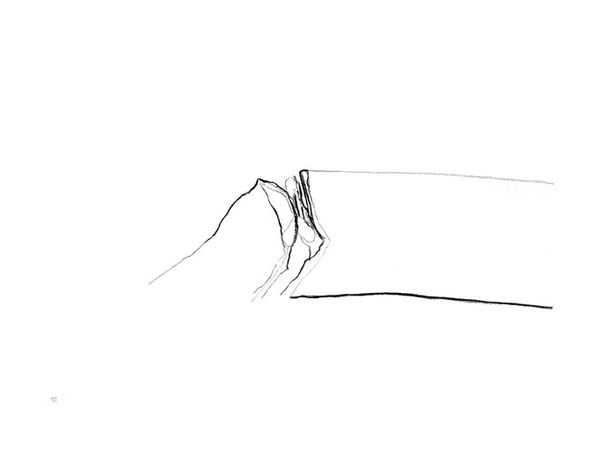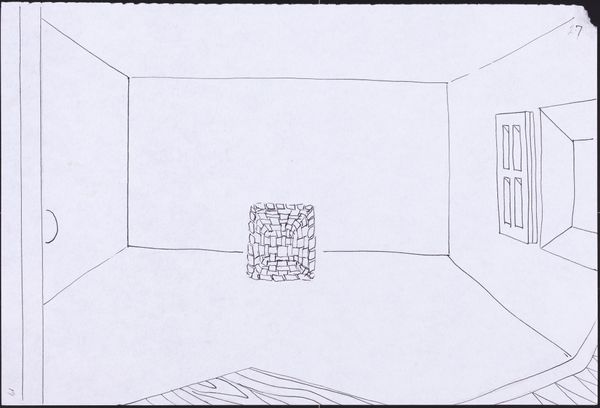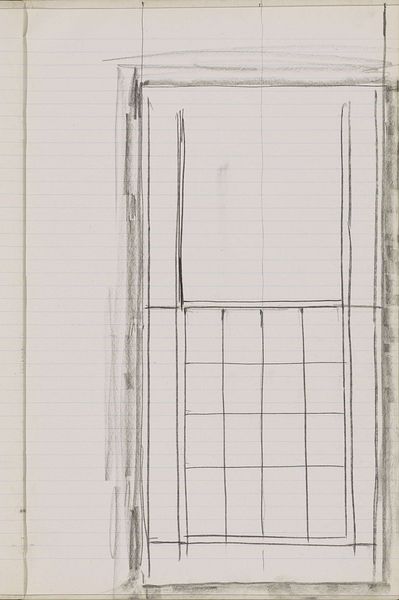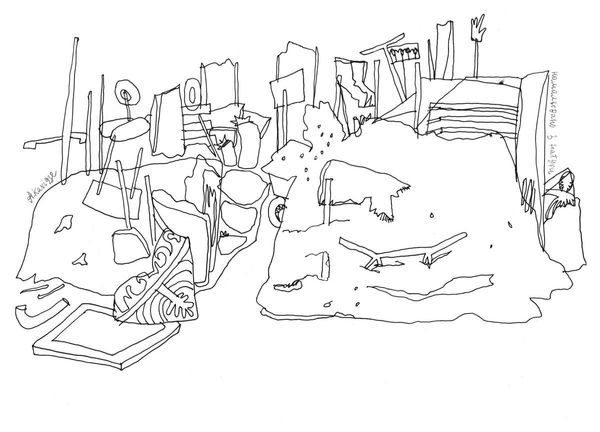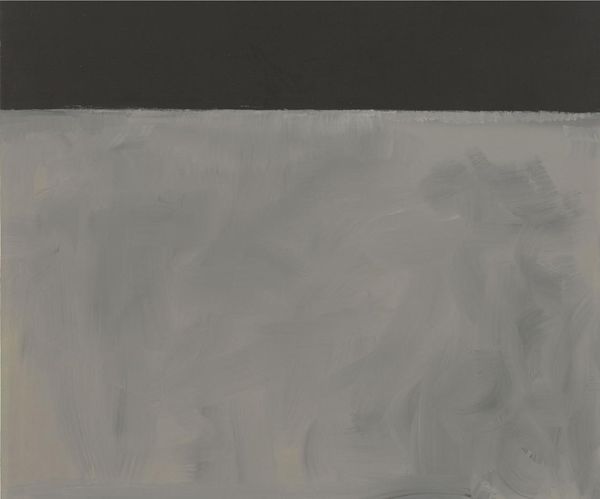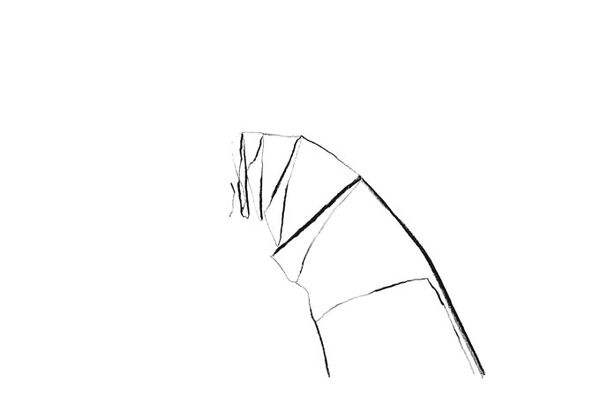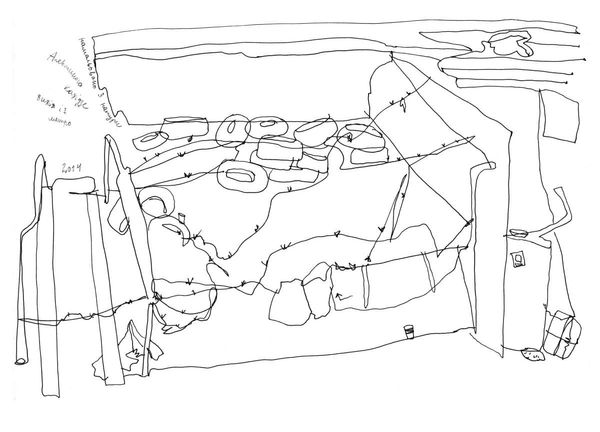
drawing, pencil
#
drawing
#
thin stroke sketch
#
line drawing illustration
#
incomplete sketchy
#
hand drawn type
#
landscape
#
figuration
#
ink line art
#
linework heavy
#
pencil
#
thin linework
#
line
#
sketched line
#
technical line art
#
initial sketch
Copyright: Alevtyna Kakhidze,Fair Use
Curator: Immediately, I notice the stark contrast – that loosely sketched interior and the openness glimpsed through the doorway. There’s a certain tension created by that juxtaposition. Editor: This is a drawing by Alevtyna Kakhidze, created in 2018. It's an untitled piece, employing primarily pencil on what seems to be paper. What strikes me is the deliberate nature of those lines. It seems purposefully unfinished, almost a preliminary study. Curator: Precisely! Consider the labour evident in each visible stroke. What does this incomplete or initial appearance mean? It hints at process. The hand of the artist is so apparent. We see not a polished product, but an artifact bearing witness to its own making. How was this sketch originally consumed? Was it a private note before a larger project or meant to stand on its own? Editor: Interesting point. Looking at this within the context of contemporary art, it makes one wonder about the role of display. An unfinished sketch elevates the process. It’s quite exposed, really. The sketchy nature, the almost crude figuration, seem quite pointed. This could almost be mocking established academic and salon norms of painting. The institutions of the art world are being deliberately questioned, even challenged by the choice of the subject matter and drawing itself. Curator: Absolutely, and think about how this piece then invites viewers to consider the material support. The pencil itself. Pencils are easily and widely obtainable. A pencil sketch democratizes image-making compared to something more precious, like oil on canvas, which necessitates a whole support system of specialized labor and capital. It changes the dynamics of the interaction we have with this "initial sketch". Editor: Agreed, I would go so far as to ask about the intention, which might be to confront us with what "art" has come to be understood as: it's now just as much about how things are made as it is the result. And that ultimately breaks with conventions, because it seems this new intention has staying power. It is quite visible in today's art world. Curator: Thinking about the work, it is intriguing how a readily accessible medium and a transparent creative process encourage us to reconsider not only the aesthetic worth of a work of art, but also the value of the labor and materiality embedded within it. Editor: And that openness—the transparency of the medium and the sketched lines—makes this such an interesting case for exploring the relationship between art, its production, and, indeed, its perception within broader society.
Comments
No comments
Be the first to comment and join the conversation on the ultimate creative platform.
